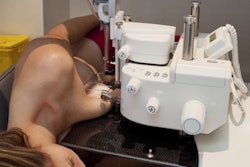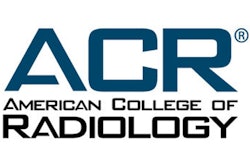Using the American College of Radiology (ACR) Thyroid Imaging Reporting and Data System (TI-RADS) decreases the number of nodules requiring biopsy, according to a study published in the May issue of the American Journal of Roentgenology.
A team led by Dr. William Middleton of Washington University in St. Louis compared the 2017 ACR TI-RADS with the 2016 Korean Society of Thyroid Radiology (KSThR) TI-RADS and the 2015 American Thyroid Association (ATA) guidelines using 3,422 thyroid nodules with available pathologic findings.
The researchers assessed each nodule's composition, echogenicity, margins, echogenic foci, and size to determine whether a recommendation would be made for biopsy or follow-up sonography under each evaluation system (AJR, May 2018, Vol. 210:5, pp. 1148-1154).
Middleton and colleagues found that the ACR system had a higher yield of malignant biopsies, mostly because it reduces the number of biopsies of benign nodules. It also eliminates further evaluation -- via biopsy or follow-up -- of a greater number of nodules.
| Comparison of thyroid nodule reporting systems | |||
| ACR TI-RADS | KSThR TI-RADS | ATA guidelines | |
| Biopsy yield for malignancy | 14.2% | 10.2% | 10% |
| Benign nodules that would be biopsied | 47.1% | 79.7% | 78.1% |
The researchers hope their findings will help with future updates to these thyroid nodule evaluation systems.
"These results, along with future prospective longitudinal studies that look at outcomes and costs, should help guide revisions of all systems and perhaps lead to a single unified multidisciplinary system that can be accepted internationally," they concluded.


















